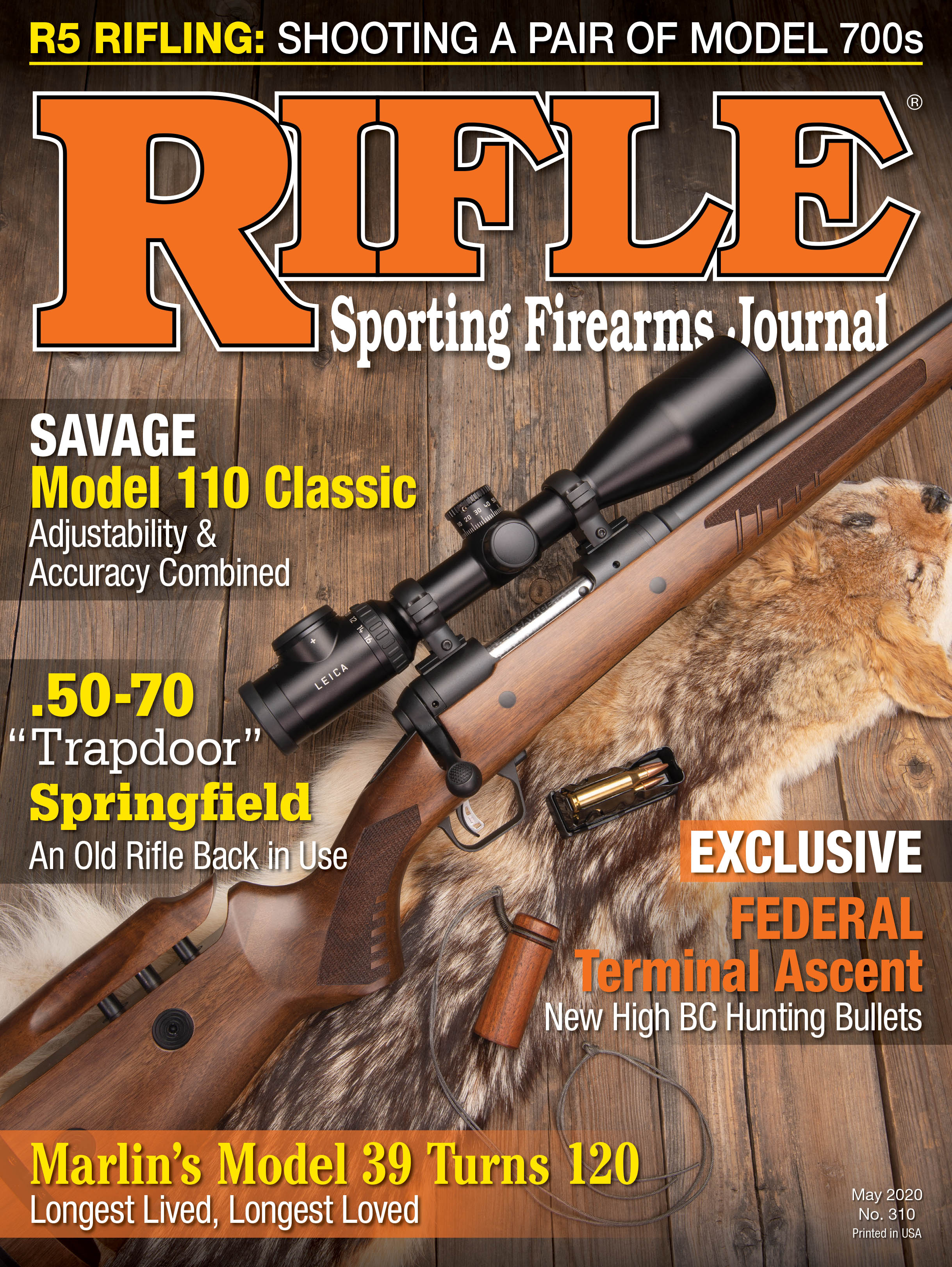Light Gunsmithing
Snap Caps and Dry Firing
column By: Gil Sengel | May, 20
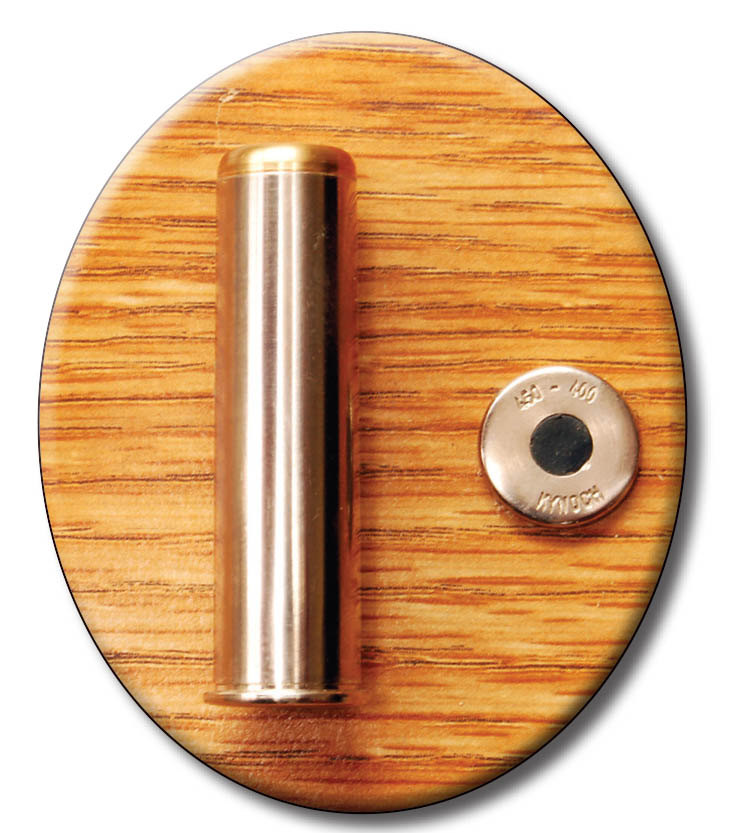
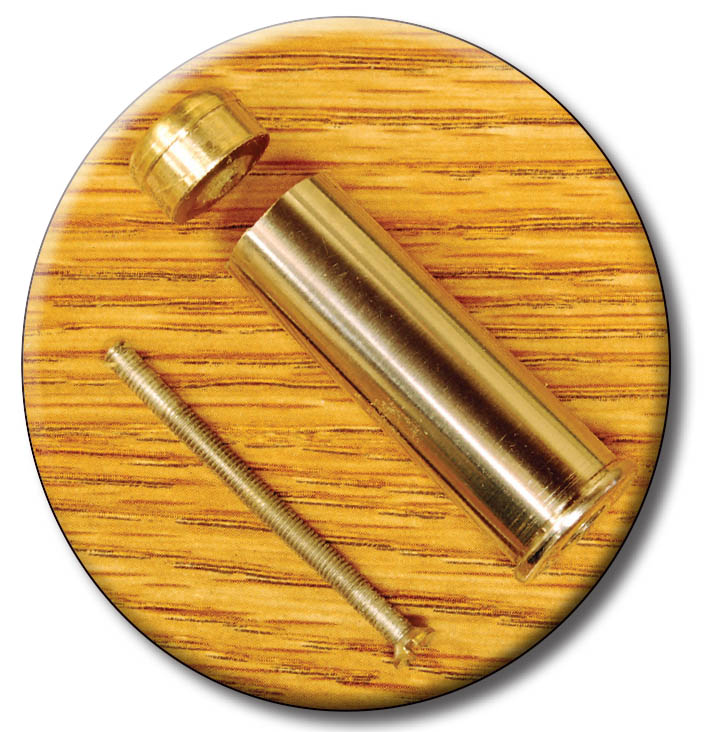
The subject of snap caps is one that seldom comes up among shooters today. Mentioning the term “snap block” just produces blank stares.
As one might guess, a snap cap is a cartridge-shaped device that fits in a gun’s chamber and cushions the firing pin when the firing mechanism is released, or “snapped.” But why would anyone want to snap an empty gun? Good question. Yet on countless occasions, I have watched people at a used gun rack pick something up and work the action, snapping the gun each time the action was closed – all of this while standing within spitting distance of a sign reading “DO NOT DRY FIRE USED GUNS.” This is why few dealers put expensive used guns out where customers can get at them without supervision.
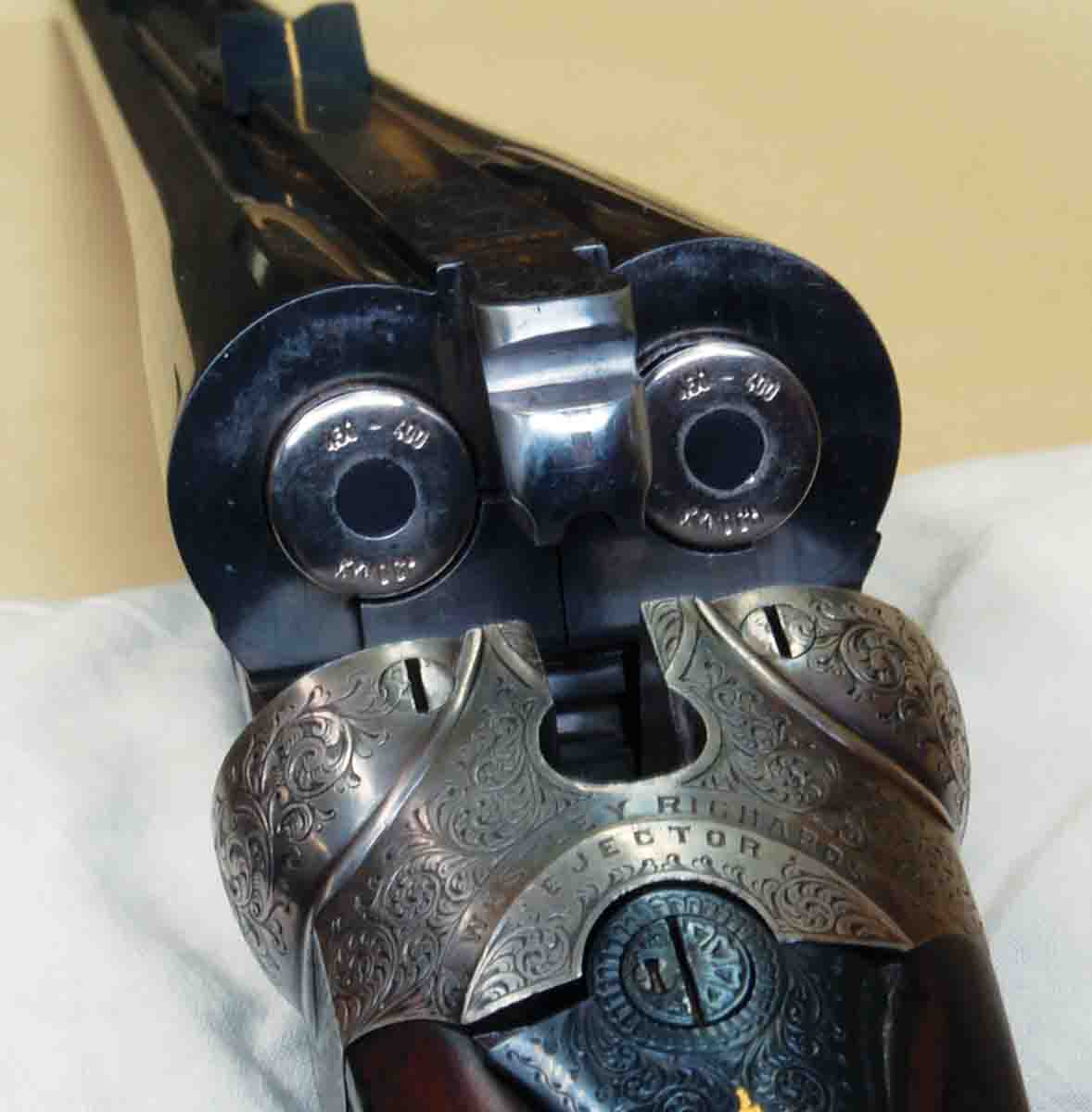
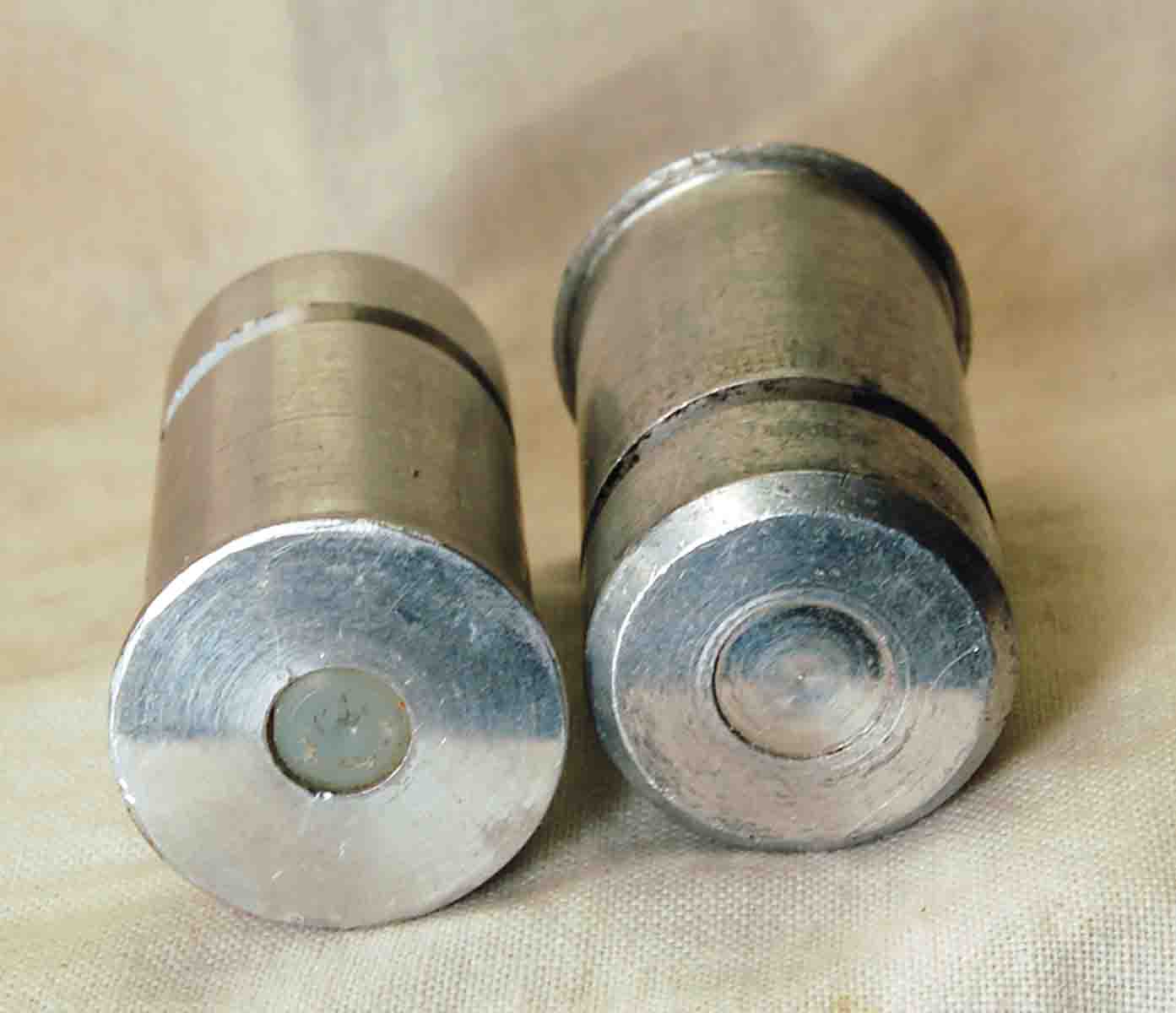
The reason it’s not such a good idea to dry fire any gun is because of the damage it causes, which is cumulative. Centerfire bolt guns are probably least affected, because the force of the mainspring is stopped by the cocking piece slamming into the bolt sleeve. Surfaces are fairly large and will take a lot of pounding, but the shock transmitted down the firing pin can break the tip, especially in cold weather. Some people say this can’t happen, yet Mauser made millions of bolt rifles having a steel disc in the stock that made possible quick disassembly of the striker parts to replace the firing pin. The 1903 Springfield had the front 2 inches of the striker (firing pin) removable for quick replacement. There was a reason for this.
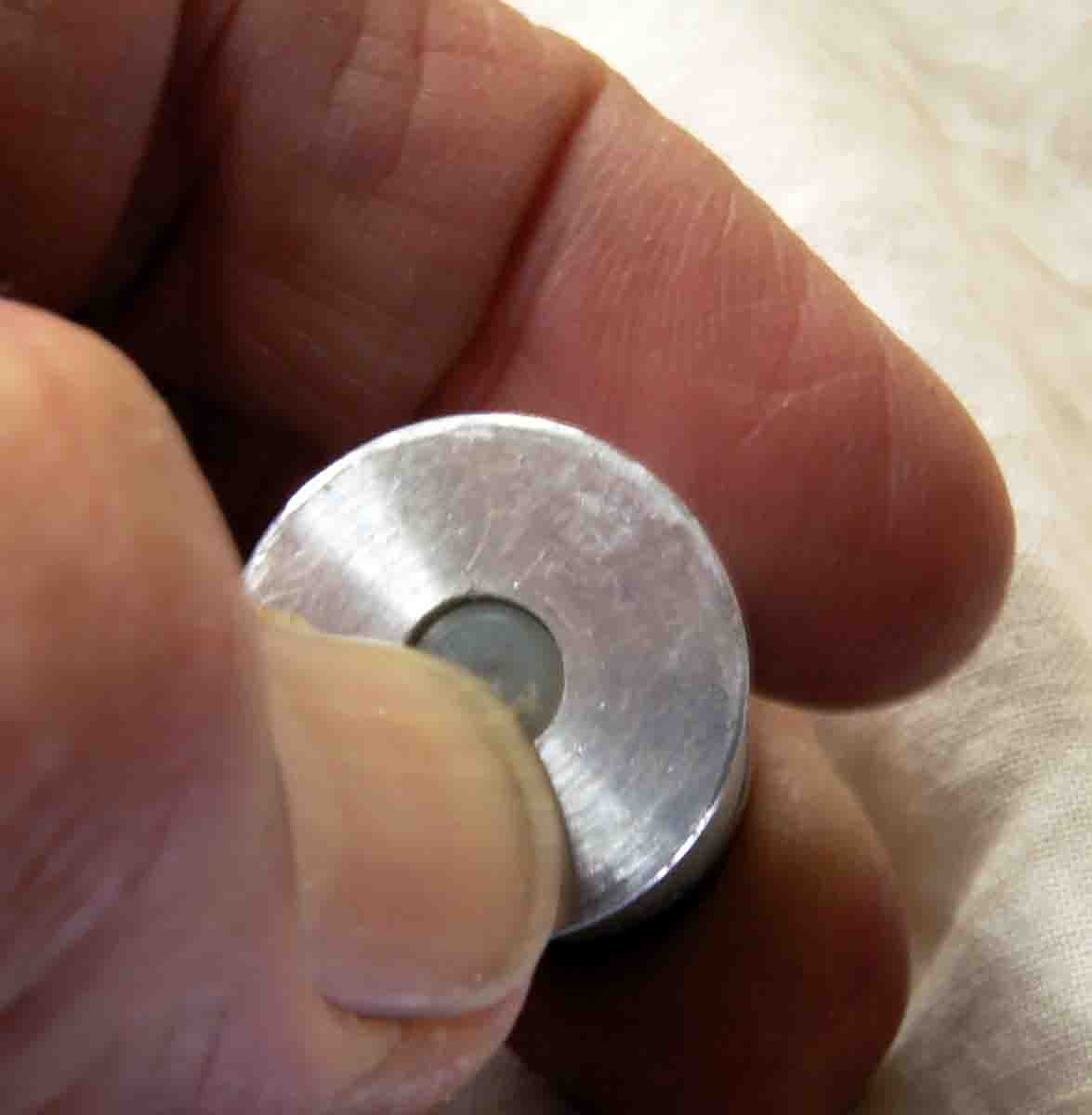
All the older pumps and autoloaders are subject to firing pin tip breakage if dry fired. All their mechanisms, however, prevent firing until they are closed and locked, so the only way to relieve mainspring pressure is snapping.
Lever actions are no better, but there is no reason to dry fire one because the hammer can be lowered by the thumb. Snapping the older Winchesters and Marlins not only breaks firing pin tips, but the hammer impact on the rear of the breechblock can deform the hole through which the firing pin protrudes.
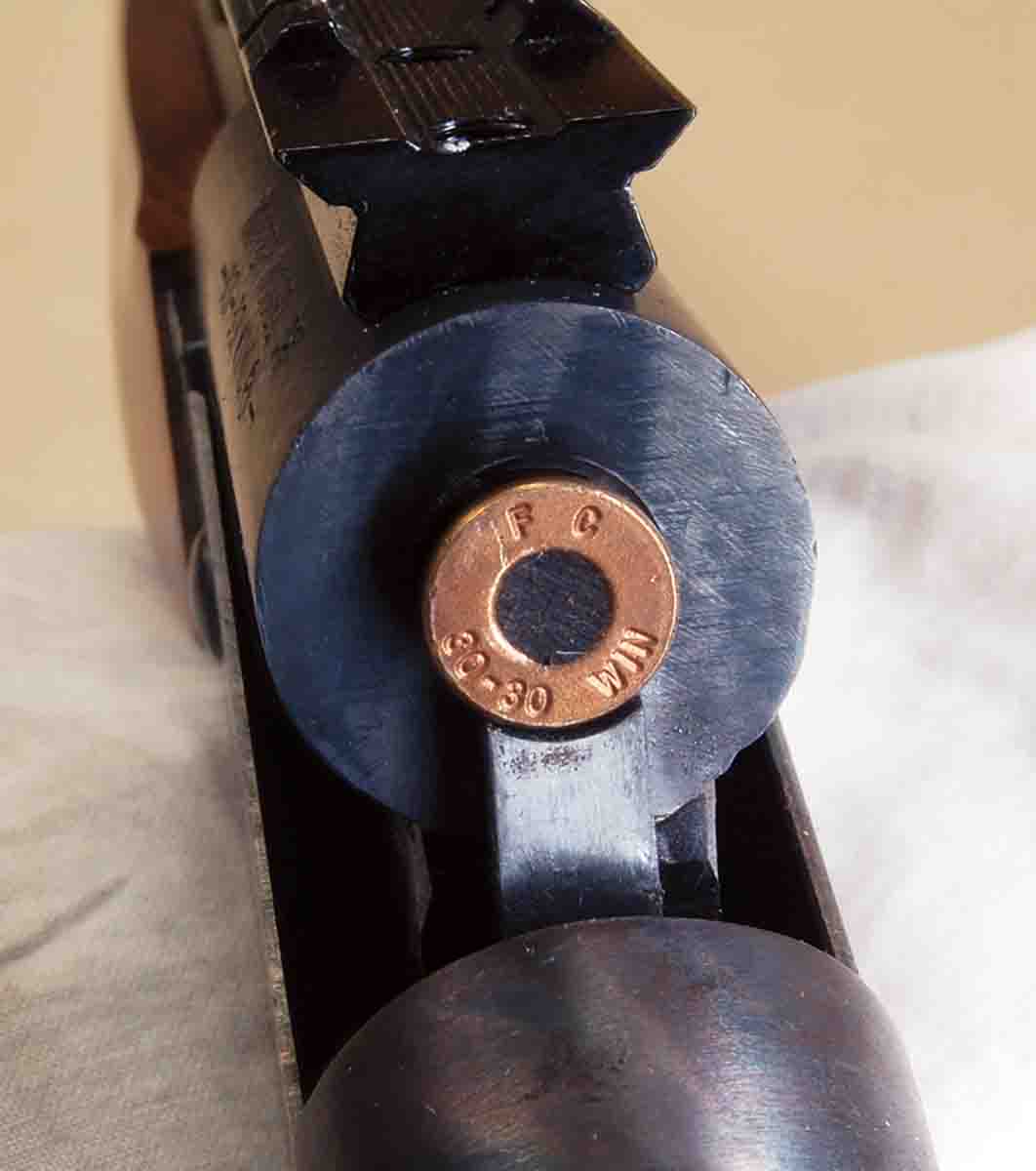
Older revolvers having firing pins separately attached or integral to the hammer will often deform the pin hole through the breech face if dry fired. Damage takes the form of pushing the metal of the thin breech face outward, forming a burr somewhere around the hole that can cause case heads to drag.
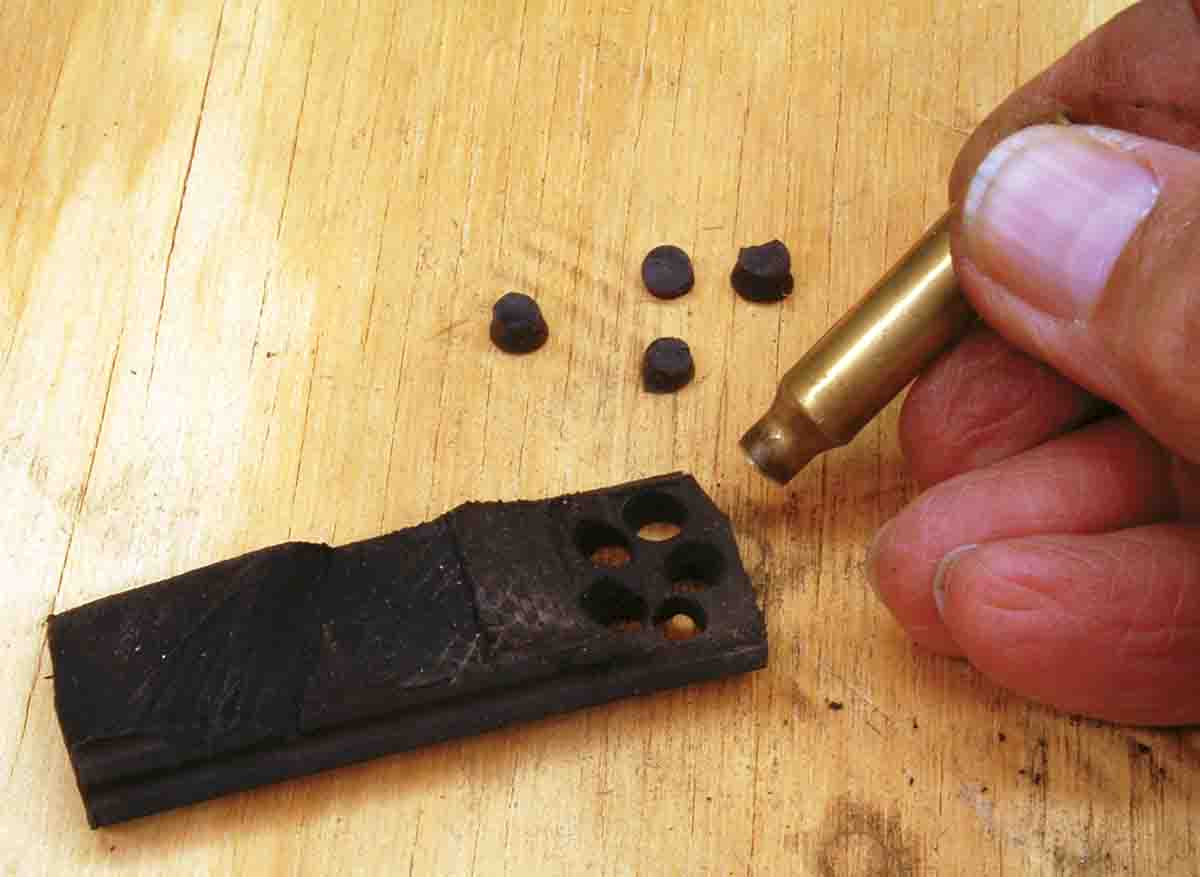
Rimfires of any type, on the other hand, are best never dry fired. Again, some target shooters do this often and some guns stand it better than others. Anyone with a gun old enough that parts are not available should think about this. I have made a few cartridge-shaped snap caps for silhouette shooters out of structural nylon, and they seemed to work well.
A most important use for snap caps, however, is double guns with a single trigger or automatic safety (safety is pushed “on” when top lever is moved to open the action). All doubles should have the locks in fired position when not being used, because many have V-springs powering the hammers, which often break if left under full compression. These can also break if the lock is fired on an empty chamber, as will firing pin tips. Unless snap caps are used there is no way to relieve mainsprings on these guns.
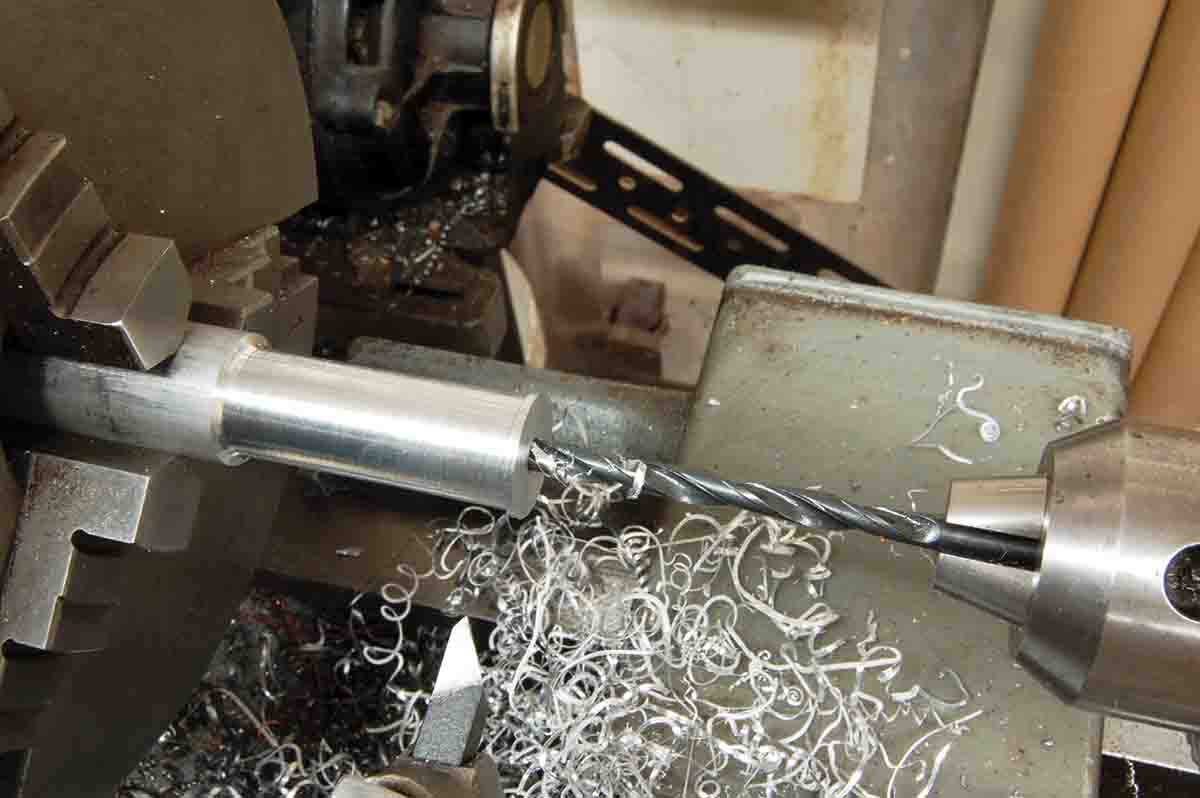
So where do we get snap caps to protect our classic guns and others that may need them? While there are a few available for popular rifle cartridges and shotgun gauges, it is interesting to note that all makers offer them in .308 and .223 form. Perhaps modern military rifles are not so immune to dry fire damage as we are led to believe.
Availability is of little concern, as snap caps are easy to make. There are two types: One has a non-movable “primer” made from a slightly soft material that catches the firing pin on its forward travel. The second features a spring-loaded “primer” that cushions the blow.
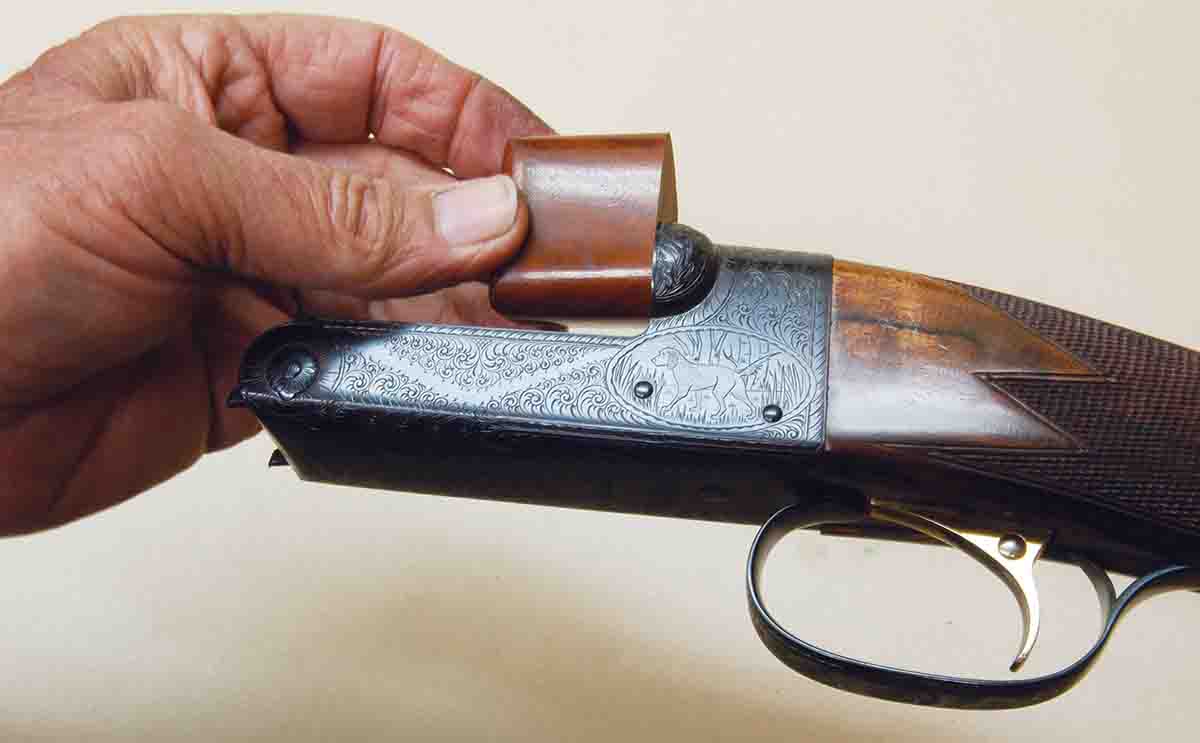
The first type is generally used for rifle rounds under .45 caliber or so, because the cases are too small in diameter or length to fit a spring powerful enough to offer meaningful resistance to the firing pin. I remember seeing such snap caps at least 50 years ago being used by bullseye pistol shooters for dry fire practice. Unaltered .38 Special and .45 Auto cases were used. Primer pockets were filled with rubber cut from slices of old tire tread.
Snap caps made in this manner work just as well today. I have made many for odd European drilling and double rifle rounds. While tire tread material may seem hard, it’s just right for the purpose. A photo shows a .223 Remington
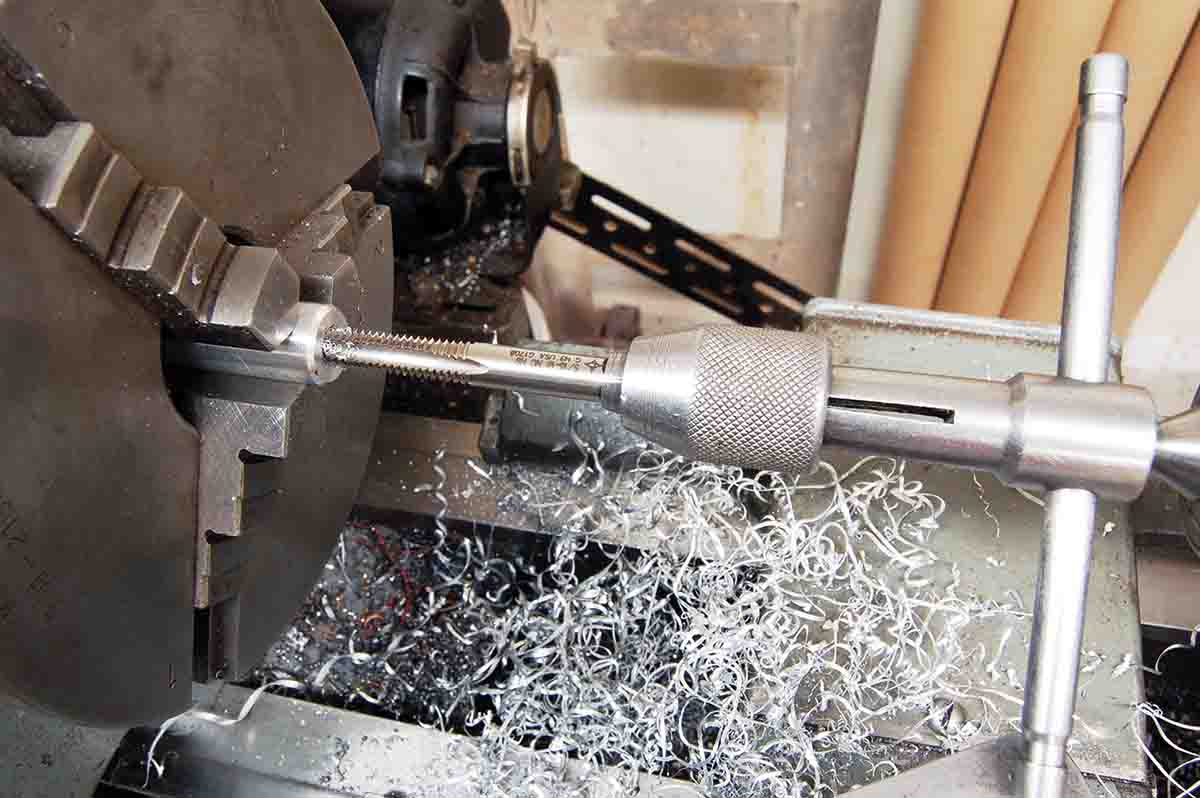
case that has had its mouth sharpened with a chamfering/deburring tool. Twisted in cookie cutter fashion, it cuts the tire material, producing a plug that snugly fits in large rifle primer pockets. Excess is sheared off using a sharp razor blade.
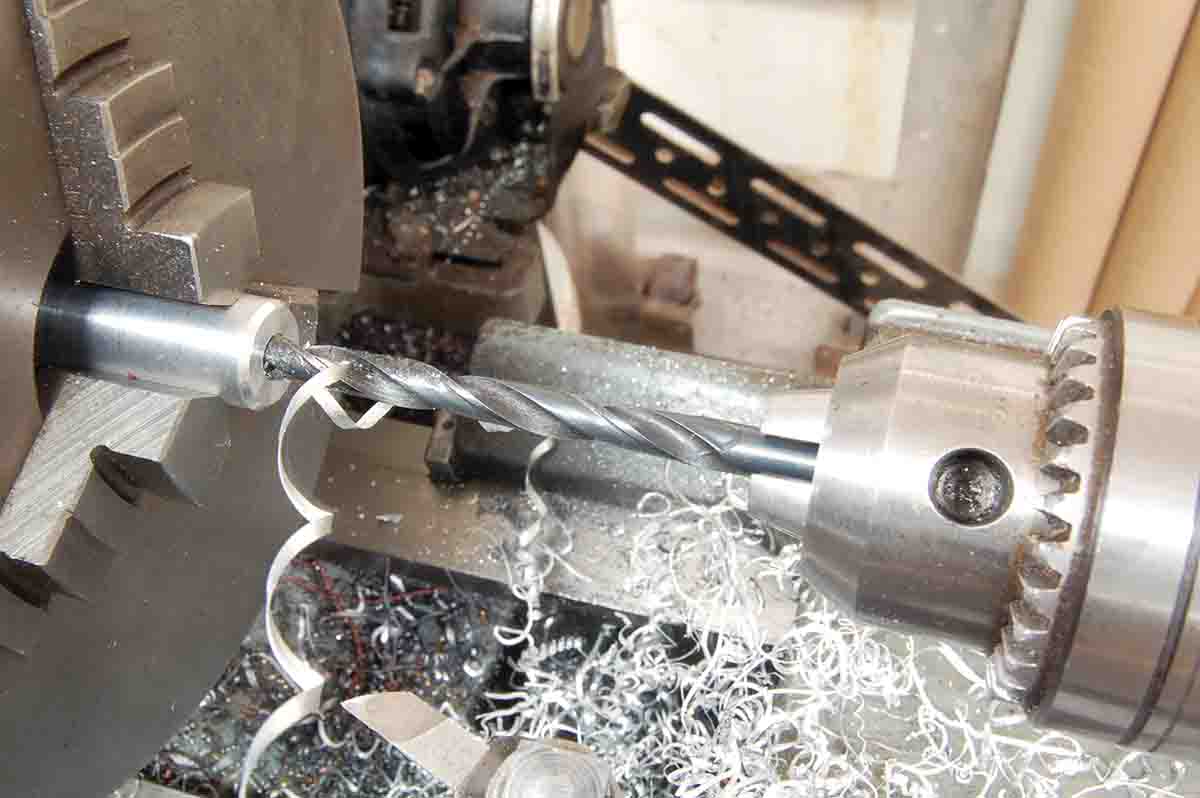
Structural nylon, acetal or other polymers could also be used but are harder and would need to be turned in a lathe. The Kynoch snap caps in the photos are like this, even though the .450/400 case is big enough for a spring-type snap cap.
Spring-loaded snap caps are best for doubles and old classic guns with strong mainsprings needed to ignite early, less sensitive primers. All of mine have bodies turned from aluminum rod. A .257-inch hole (to allow clearance for a .250-inch diameter spring) is drilled lengthwise to within about .200 inch of the base with a letter “F” drill (a common 17⁄64 bit can
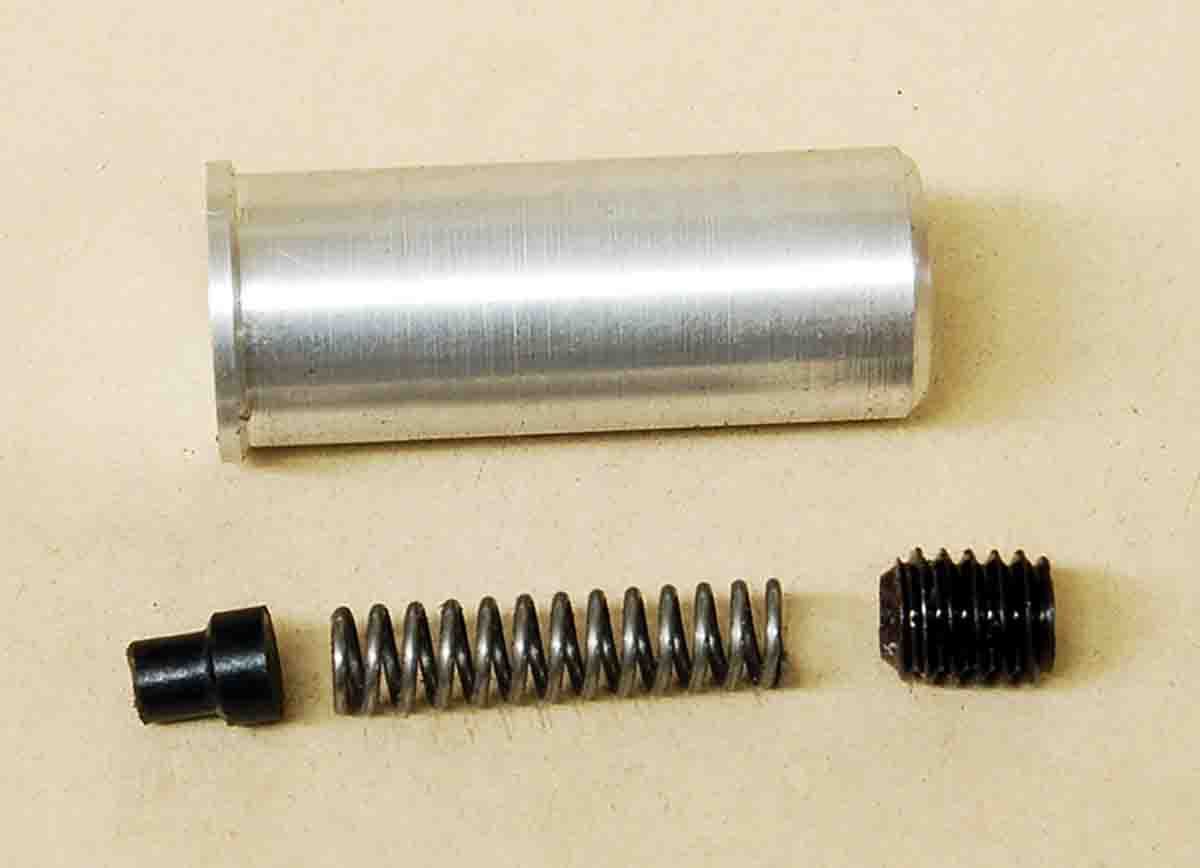
also be used). The hole is continued on through with a .135-inch or slightly larger drill – it’s not critical. A .250-inch diameter acetal rod is then turned with a shoulder to fit through this hole. The large hole is tapped 5⁄16x18 TPI down about a half inch. The acetal plug, spring and setscrew are shown in a photo and explain the process better than words. The spring and setscrew are common hardware store items. The setscrew is turned to compress the spring until the “primer” can just barely be moved inward by maximum pressure from the thumbnail. Not very scientific, but it works.
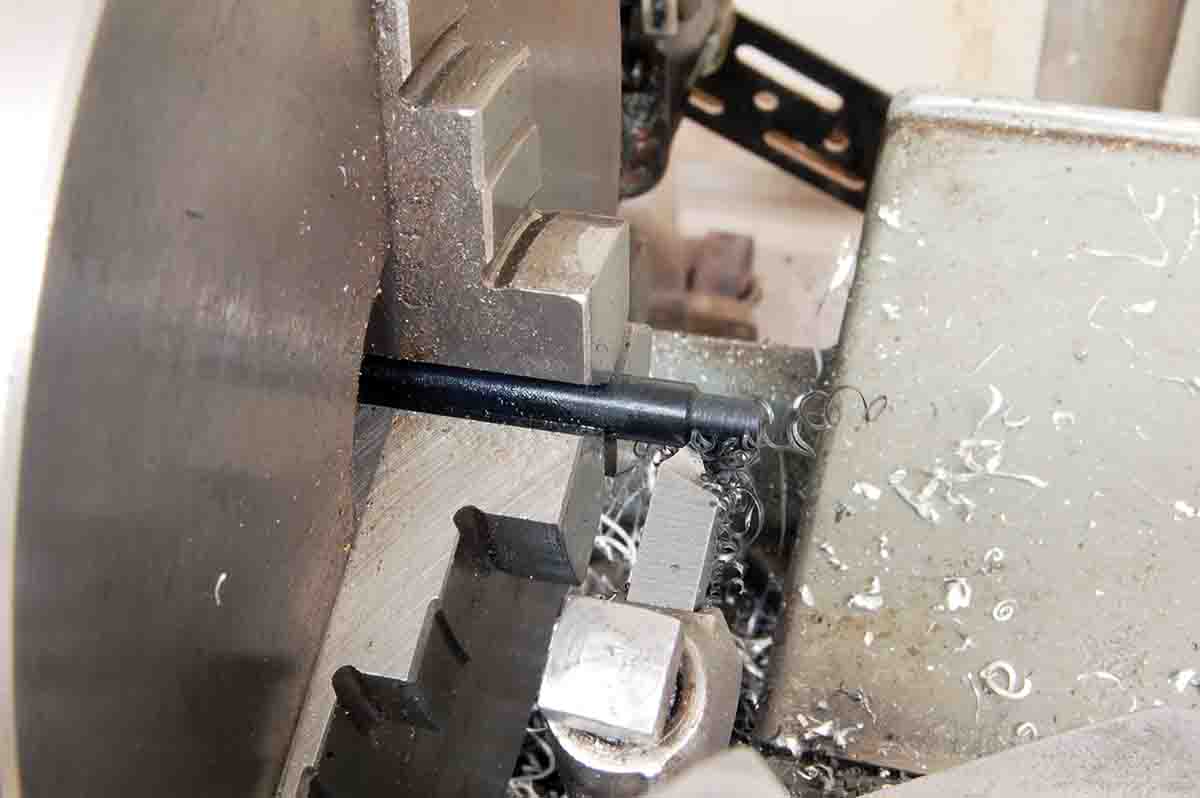
Finally, we have the snap block mentioned at the beginning of this piece. It is a block of walnut or ebony that is sometimes included with the other accessories of a double gun that is stored taken down in a trunk case. After the barrels are removed, the end grain of the block is held against the breech face and locks are snapped, driving the firing pins into it. Broken firing pins and mainsprings are prevented.
While not snapping or dry firing a gun is best, for those people who find it necessary, the use of some type of snap cap will prevent unwanted and perhaps very costly surprises.


